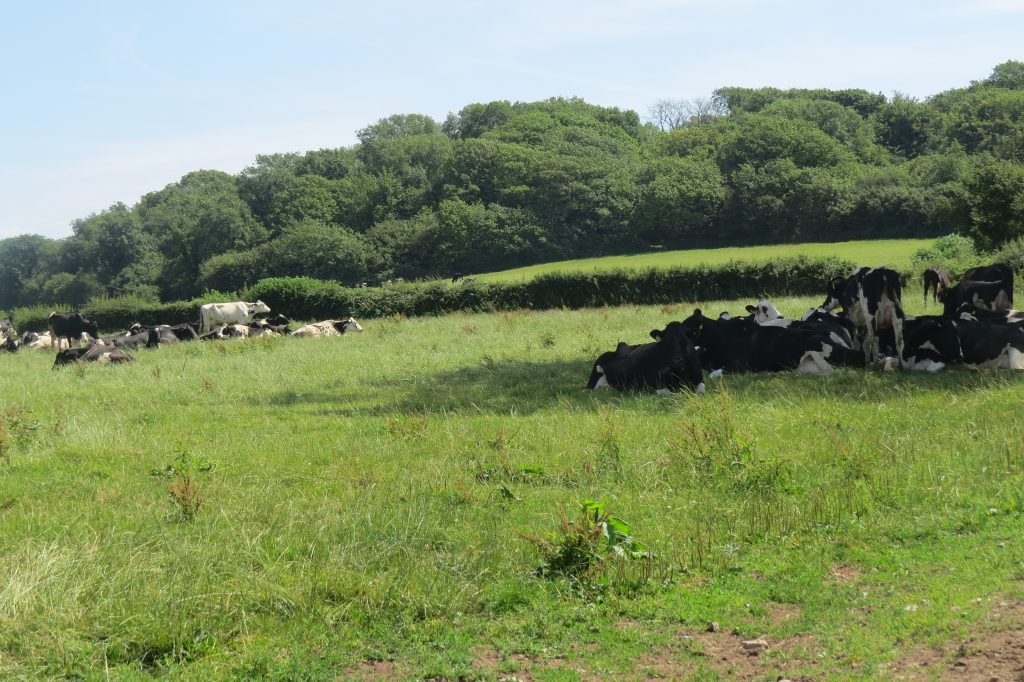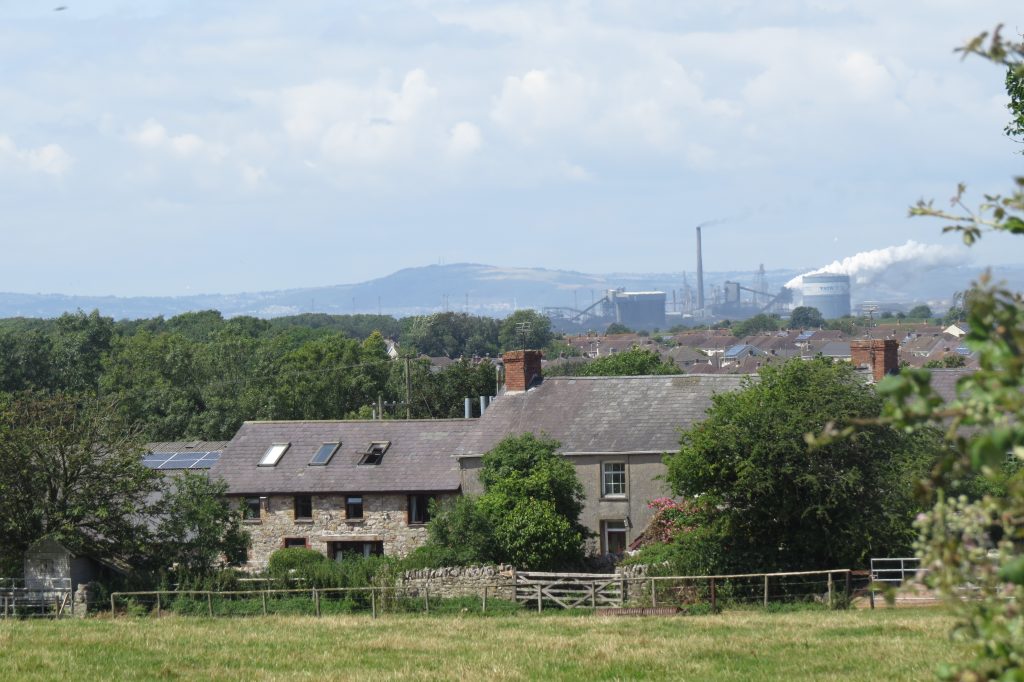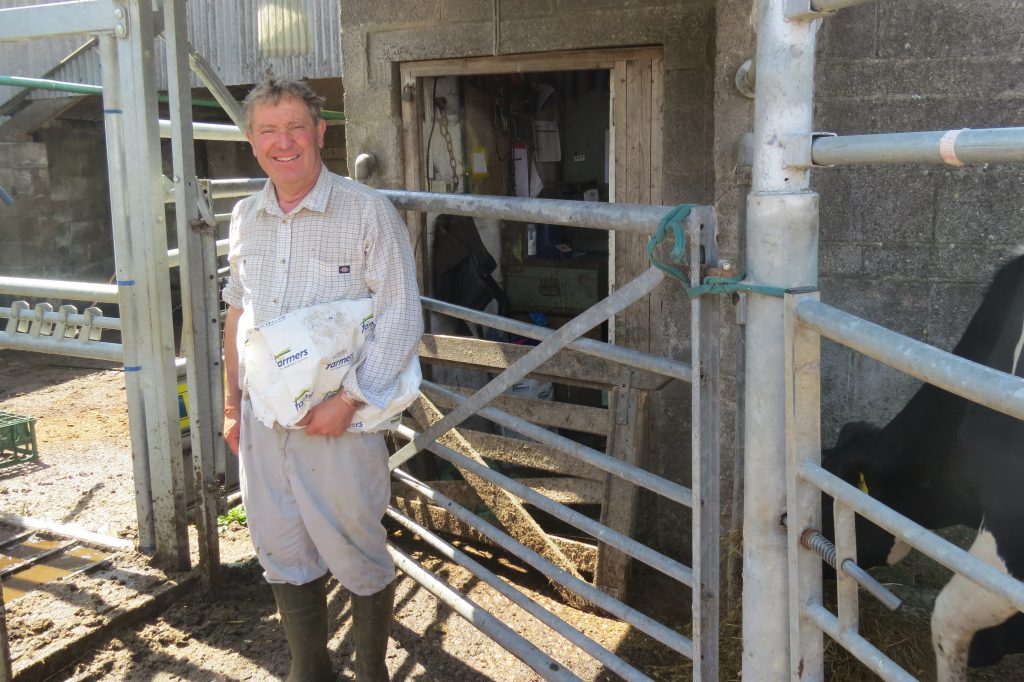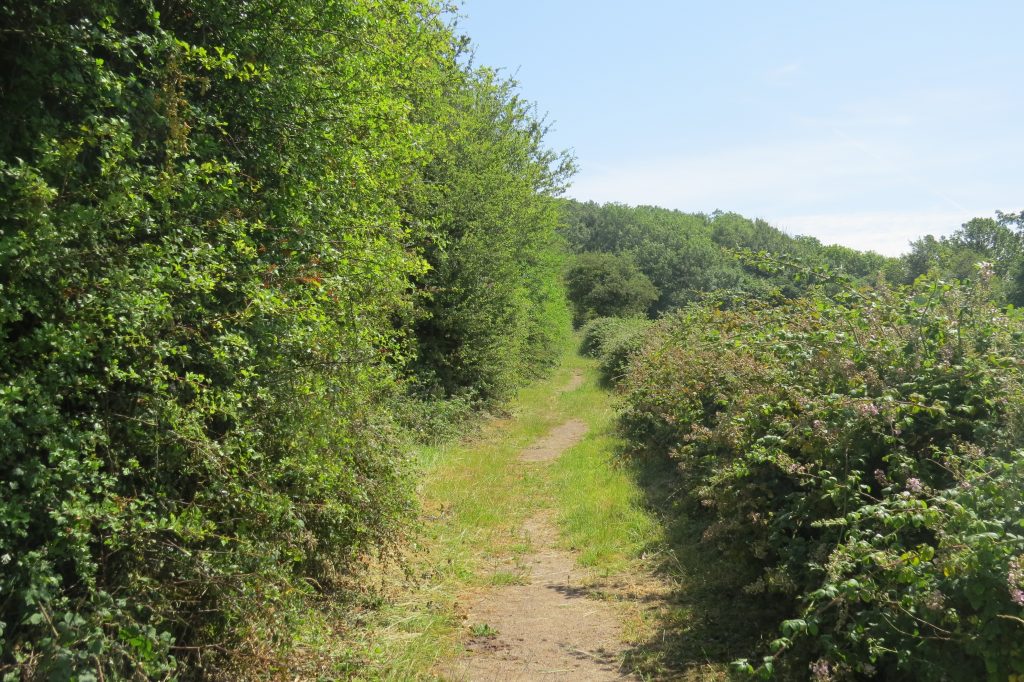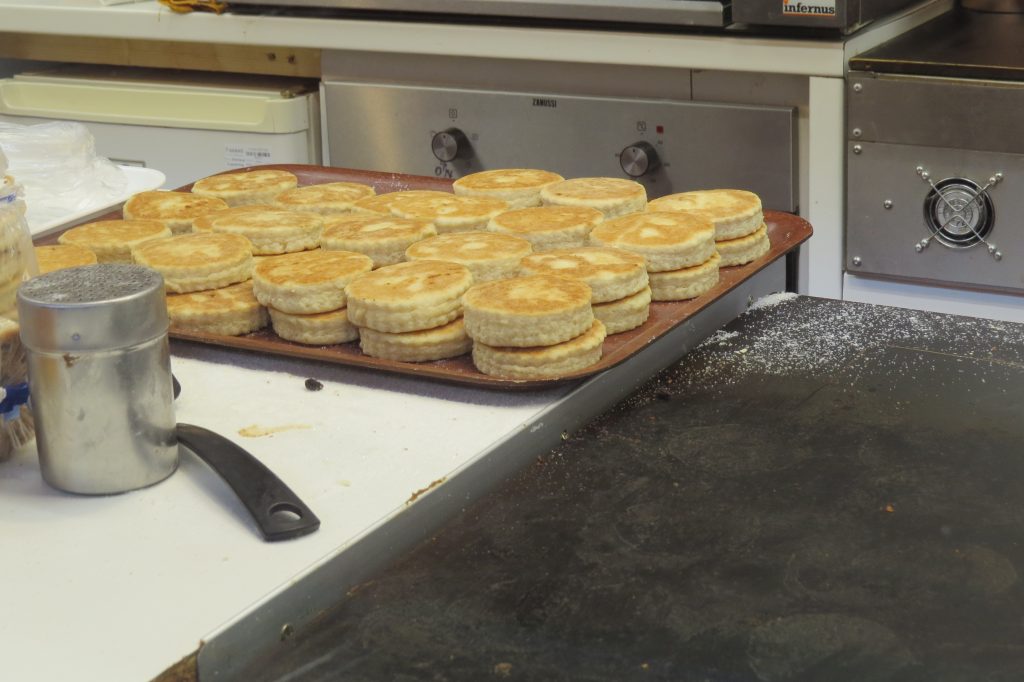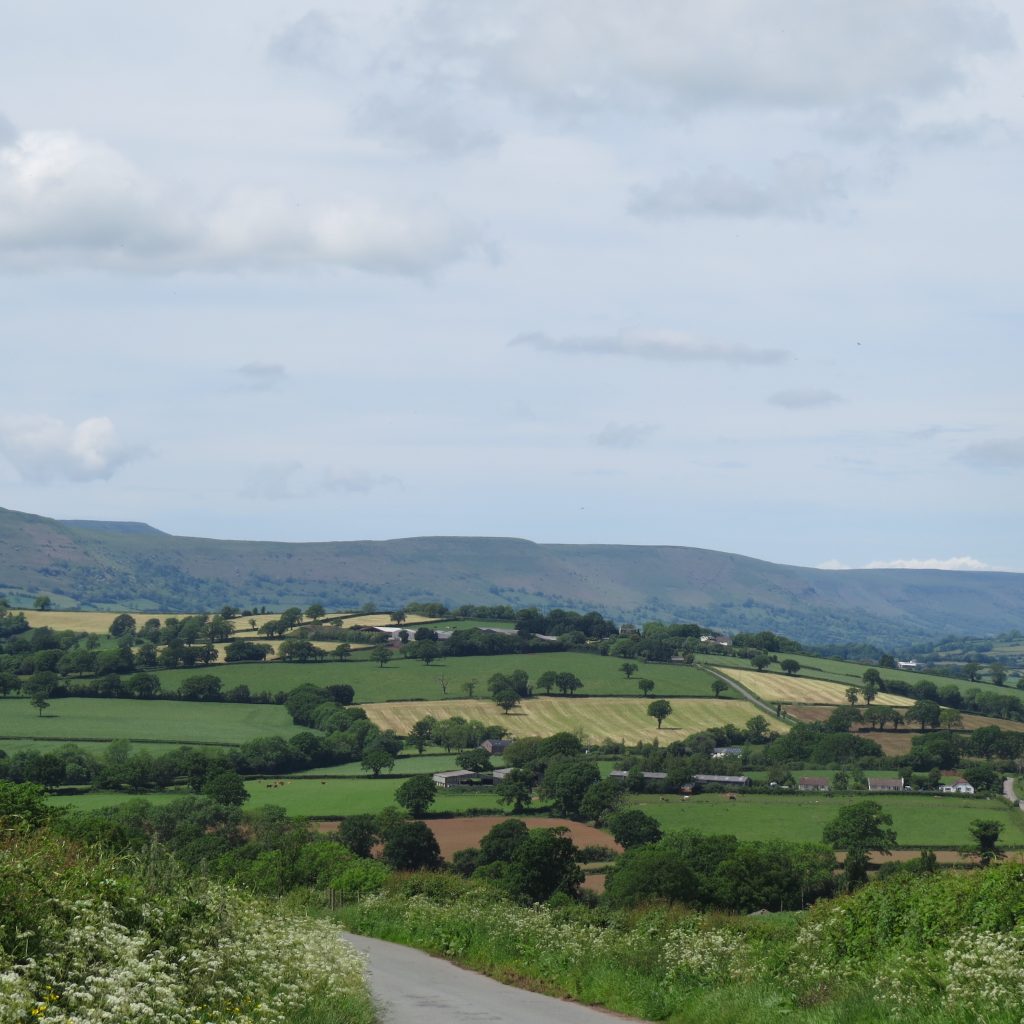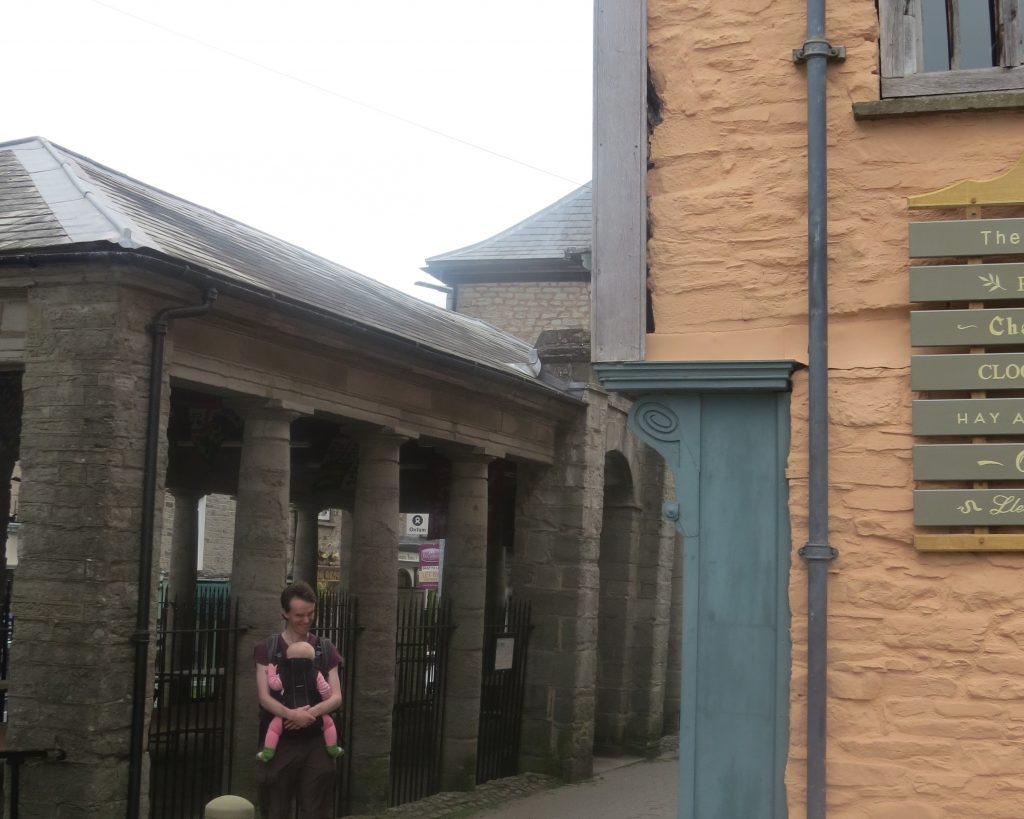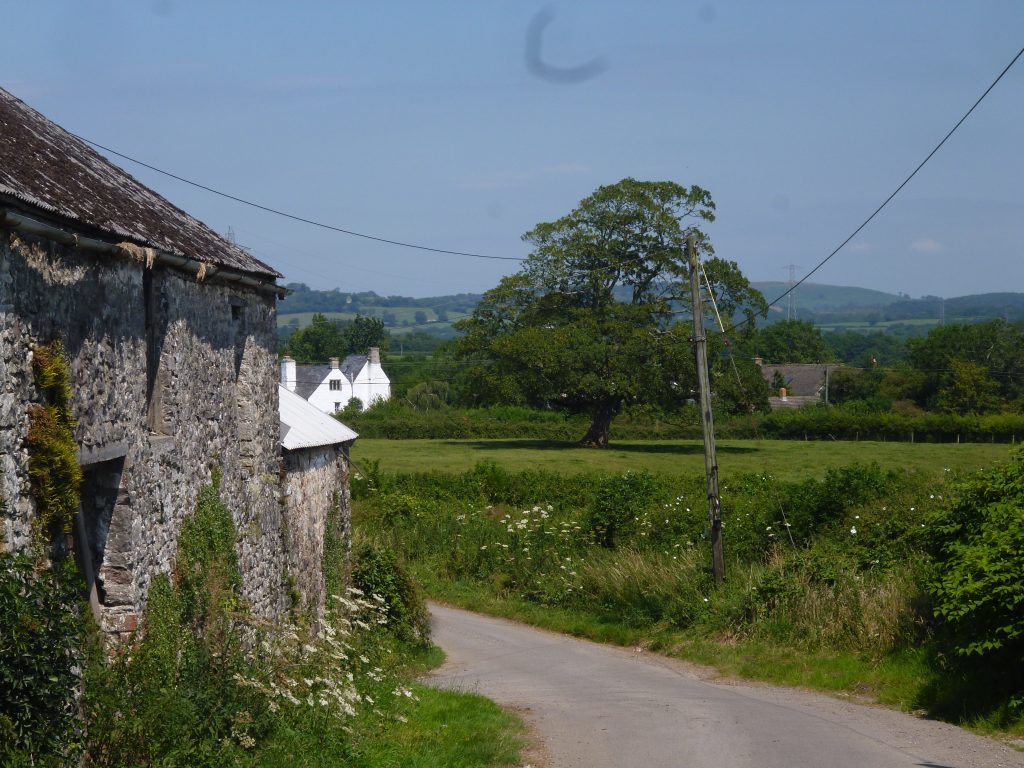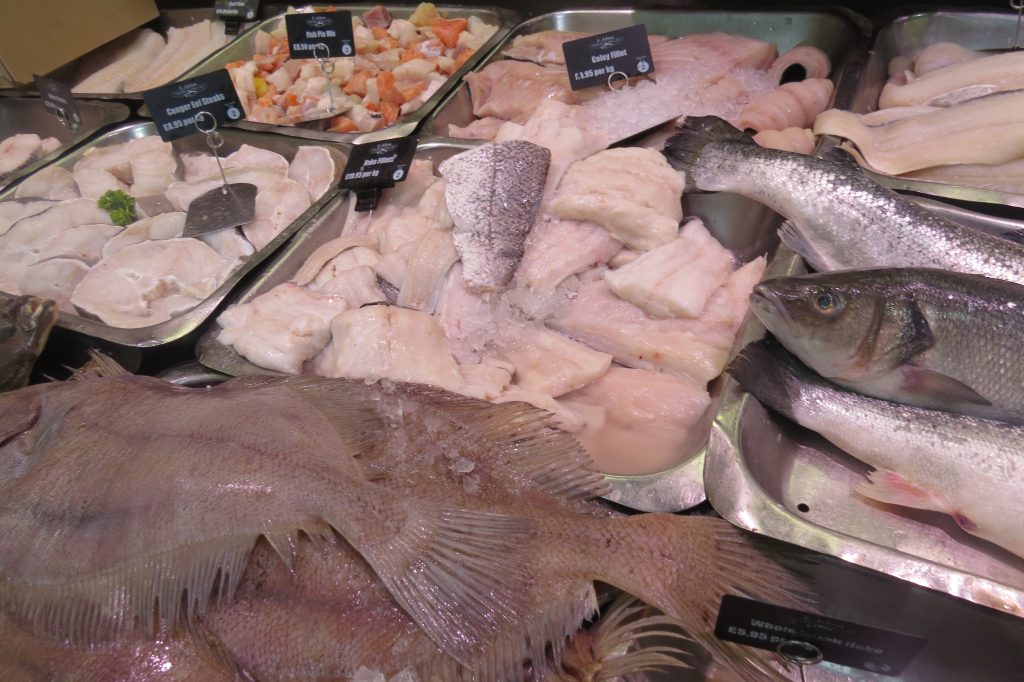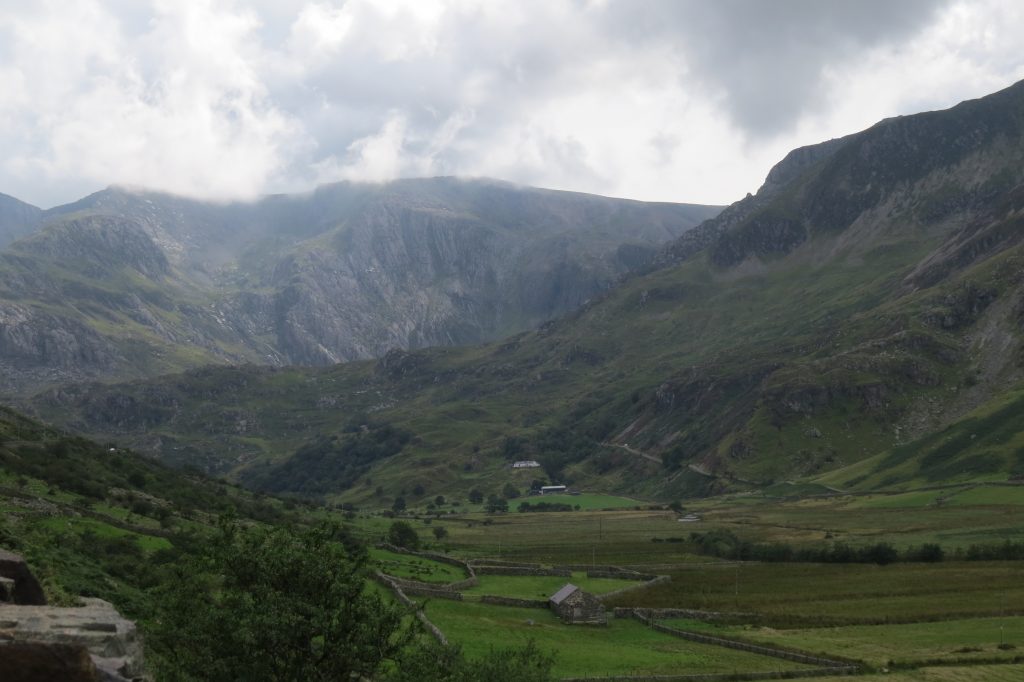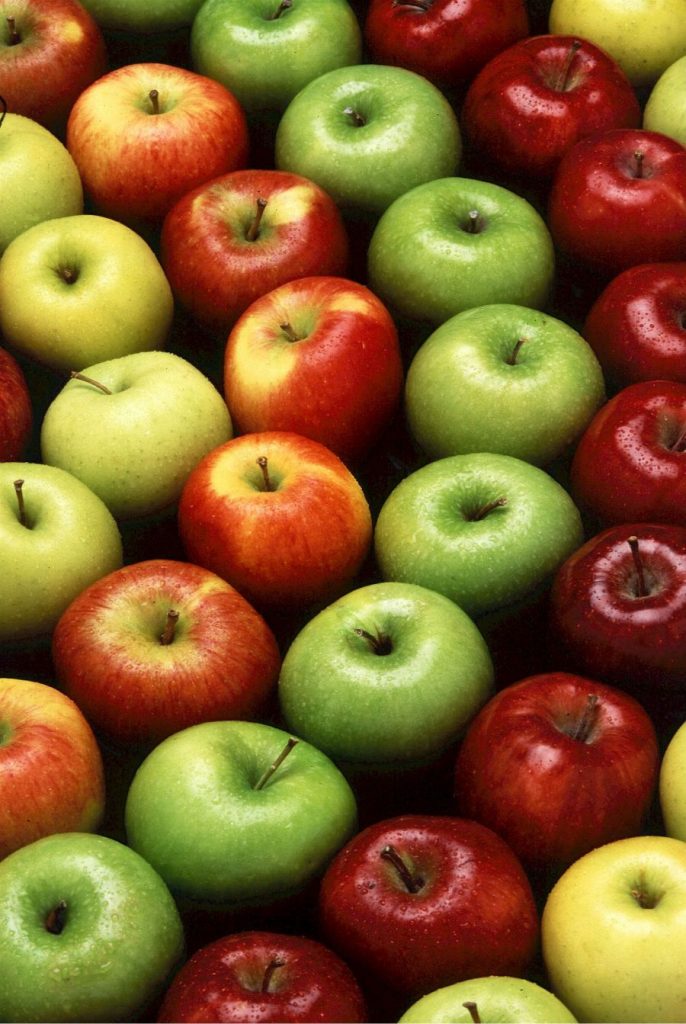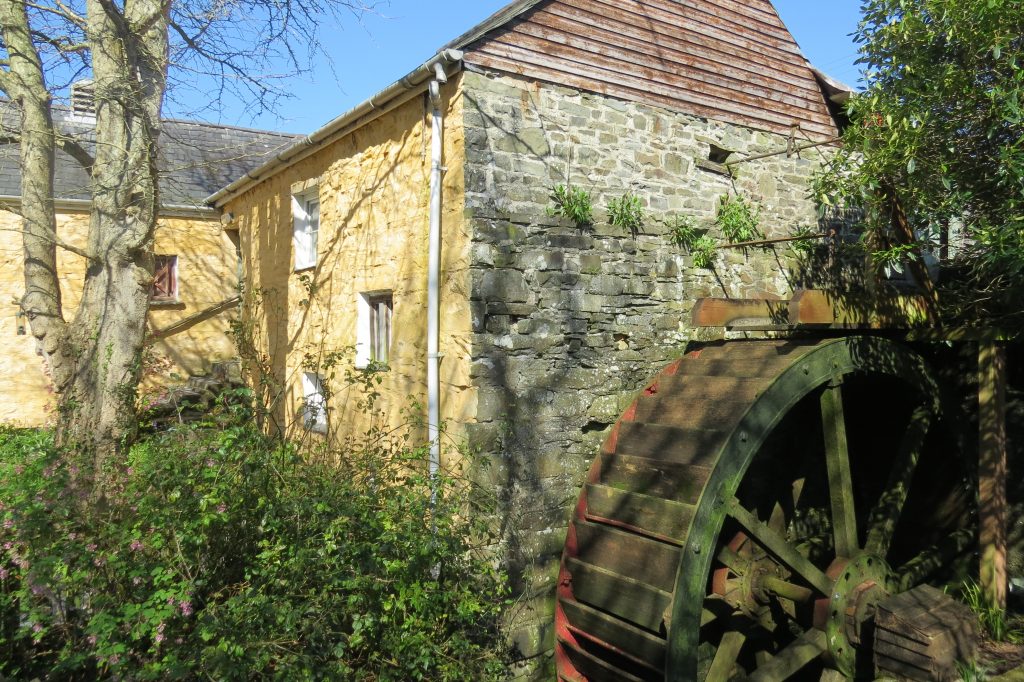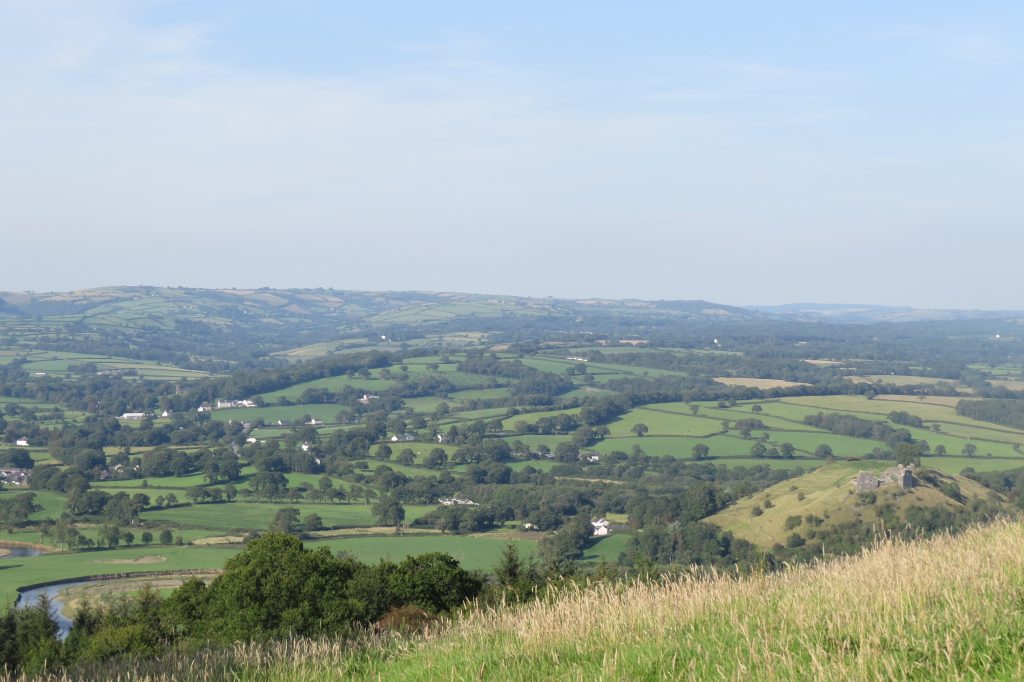Yn yr ysgrif diwethaf, cawsom le i ystyried un wrth-ddadl i’r syniad y byddai dosbarthiadau is Cymru yn efelychu patrymau bwyd y dosbarthiadau uwch, sef bod y bwlch cymdeithasol rhyngddynt mor sylweddol yng Nghymru (oherwydd e.e. iaith, ethnigrwydd, profiadau neu grefydd) fel na allai hyn ddigwydd – a diystyru hynny. Un wrth-ddadl sylweddol arall sydd, sef bod y dosbarthiadau is yng Nghymru mor dlawd fel na fyddai modd iddynt efelychu patrymau diet y bonedd; mewn gair, ystrydeb ‘Cymru dlawd, fynyddig’.
Beth gallwn ddweud am sefyllfa economaidd y boblogaeth, yn enwedig yng nghyswllt eu gallu i gael gafael ar fwyd digonol ac amrywiol? Eto, dim ond dechrau crafu’r wyneb a wnawn yma, trwy edrych yn benodol ar dystiolaeth:
1) Cerdd David Thomas, ‘Tair Sir ar ddeg Cymru’
2) Adroddiad yr ‘Agricultural Survey of South Wales’ o 1814 (a dynnai ar dystiolaeth o’r degawdau cyn hynny)
3) Sgyrfi
Cerdd David Thomas
Yn ‘Hanes tair sir ar ddeg Cymru’ gan David Thomas, a argraffwyd yn Amwythig ym 1750 gan Thomas Durtson, cawn ddisgrifiad hir a manwl o nodweddion unigryw gwahanol ardaloedd Cymru. Rhydd sylw arbennig i fwydydd a diet trigolion cyffredin y siroedd, a chawn ddarlun da o’r gwahaniaeth rhwng ardaloedd mynyddig;
Caernarfon:
‘bara ceirch fydd yma lawer,
o gaws, ymenyn a llaeth lawnder’
Meirionydd:
‘Mae’r defaid cigog brafa yng Nghymru
bara ceirch sy ym mhob anedd,
caws ymenyn llaeth ddigonedd’
ac ardaloedd mwy arfordirol, mwynach eu tir a’u hinsawdd;
Penfro:
‘O foch ac yd y lawna yng Nghymru…
Caws ymenyn sydd yn brina
Bir a geir a’r bara garwa
Ym Mhenfro, Dinbych, Hwlffordd, Dewi
Y cig a’r pysgod sydd i’w pesgi.’
Mynwy:
‘Dyma’r fro gyfoethoca yng Nghymru
Gwenith lawer iawn sydd ynddi…
Pob yd ond rhyg sy’n hon yn tyfu
a’r bara gwenith goreu yng Nghymru
Ychydig ymenyn a chaws caledion
Cawl y Cennin diod ddigon…
Gwaith y merched hyn yn union
nyddu rhai gwlanenni meinion
Trin sidir o’r perllannau tewfrith’
Mae’n amlwg bod ceirch a chynnyrch y llaethdy yn rhan bwysicach o ddiet yr ardaloedd mynyddig – ond ni chawn ryddid o’r gerdd hon i gasglu o hynny bod prinder bwyd yn yr ardaloedd hynny: ‘bara ceirch sy ym mhob anedd, caws ymenyn llaeth ddigonedd’ yw’r adroddiad am Sir Feirionydd a’i hucheldiroedd. Yn ddigon tebyg, gwelwn mai ‘llawer’ o fara ceirch a ‘llawnder’ o gaws, ymenyn a llaeth sydd yn Sir Gaernarfon.
Ac o ran yr ardaloedd mwynach, cawn son am ‘gawl y cennin’ yn Sir Forgannwg a chawl erfin yn Sir Gaerfyrddin. Hyd yn oed yn Sir Aberteifi crybwyllir cawl erfin, er bod y tir yno yn uwch ac yn salach na rhannau arfordirol eraill o’r wlad. Mae cyffredinrwydd yr erfin yn arwydd yn ei hun o ddylanwad ffasiwn (Seisnig, yn yr achos hwn) ar batrymau tyfu a bwyta’r werin yn y cyfnod hwn: aethai yn fwyfwy cyffredin yn ystod y 17eg ganrif yn Lloegr, ac fe’i gyflwynwyd yn gyffredinol gan y bonheddwr Townshend ar ddechrau’r 18fed ganrif.
Ac yna wrth gwrs ceir son am gwrw, seidr a physgod yn y penillion am Sir Benfro a Sir Fynwy; termau cyffredinol am ddosbarthiadau o fwydydd, gydag amrywiaeth mwy, fe ddichon, yn celu y tu ôl i’r termau hynny. Trwyddi draw, defnyddir ansoddeiriau ac enwau – ‘llawnder’, ‘helaeth’, ‘digonedd’, ‘pesgi’, ‘tewfrith’ – sy’n awgrymu digonedd ac nid prinder. Cawn ddarlun o economi bwyd sefydlog a llwyddiannus – ac yn sicr nid o fwlch sylweddol rhwng diet digonol i’r bonedd a chaledi i’r werin. Gallem gyfiawnhau oedi cyn derbyn tystiolaeth y bardd yn hyn o beth ar sail y ddadl ei fod yn gweithredu fel bardd yn y traddodiad mawl Cymraeg – ond yna nodwn mai’r ‘bara garwa’ sydd yn Sir Benfro, am Sir Forgannwg darllenwn mai caws ‘rhesymol, ymenin dichlin’ sydd yno, ac am Sir Fynwy darllenwn mai ‘ychydig ymenyn’ sydd yno. Mewn geiriau eraill, nid molawd Cymru sydd yma, ond disgrifiad ac arfarniad. Gan hyn, anodd dychmygu y byddai’r bardd wedi gallu ysgrifennu cerdd o’r fath petai’r realiti ar lawr gwlad mor bur wahanol i’w ddisgrifiad ohoni.
Agricultural Survey of South Wales
Ond ni raid derbyn ei dystiolaeth ar ei ben ei hun; cawn ddisgrifiad arall o’r tu allan yn yr ‘Agricultural Survey of South Wales’ a gyhoeddwyd ym 1815. Ymdrin â gerddi mae rhan gyntaf yr adroddiad hwn, a chawn yn gyntaf gydnabyddiaeth o sefyllfa’r bonedd:
‘Persons of fortune in every part of the district, are upon a par with those similarly circumstanced in other parts of the island; in having gardens exhibiting taste, and producing plenty. The fruit-gardens are, in most places, excellent; the productions in great plenty and of the best flavour’.
Yna try’r adroddiad ei sylw at ffermwyr a thyddynwyr:
‘The gardens of mere farmers are in general well stored with the more useful vegetables, or such as supply the table in regular succession throughout the season….As to cottage gardens, the lowlanders, of course, generally take the lead ; and among them, such as are of Silurian, seem to surpass those of Dimetian extraction, in cottage horticulture. In the gardens of West Wales, we find kitchen vegetables in plenty and perfection. Cottagers, however, are not here as fond of gardening as they are in the eastern parts of South Wales, where we always find a pleasing mixture of flower and kitchen garden, with such fruits as are in such gardens cultivated with feasibility,— gooseberries, currants, raspberries, &c. Potatoes, in West Wales, and not improperly, are the great object of cottage horticulture : not that there are nothing else to be met with in such gardens ; but these prevail so much, that everything else is on a smaller scale than in other places.’
Mae’r paragraff uchod yn siarad dros ei hun: roedd tyfu llysiau a ffrwythau yn gyffredin ar draws siroedd de a gorllewin Cymru, ac nid yn unig yn nhai’r ffermwyr ond ymhlith tyddynwyr hefyd. Mae’r adroddiad hwn yn deillio o adeg rai degawdau ar ôl ein cyfnod ni (1550-1750), ond mae’n arwyddocaol nad yw’r awduron yn disgrifio hyn fel peth newydd, ond yn hytrach fel sefyllfa sefydlog. Gellir tybio bod cyffredinrwydd tato yng ngerddi’r gorllewin yn deillio o hinsawdd waeth (gwlypach ac oerach yn ystod y tymor tyfu) ac o briddoedd llai ffrwythlon ar y cyfan.
Yna cawn ddisgrifiad manylach o arddwriaeth y de-ddwyrain (Morgannwg, Brycheiniog a Mynwy), sy’n werth dyfynnu’n gyflawn yma:
‘The kitchen-gardens of the market-men at Llandaff, near Cardiff, are numerous and productive ; supplying the most convenient parts of South Wales, and in a certain proportion the Bristol market, with vegetables : such a group of gardens for the accommodation of the public, we have not noticed elsewhere within the district. To enumerate the several articles of the first-rate gardens, would be to write in part a botanical dictionary : the crops of a farmer’s- garden consist of the vegetables most appropriate to his table, viz. early potatoes, yellow turnips, early and winter cabbages, greens, varieties of pease and beans, carrots, onions, and other alliaceous plants, and varieties of salads; to which some add brocoli, cauliflowers, asparagus, seakale, rhubarb.
Some thrifty cottagers aim at most of these, especially near towns and manufacturing places. Parsnips (llysiau gwyddelig), a common ingredient formerly in the All-Saints-Eve dish, are now but rarely cultivated.’
Mae sawl peth y gellid tynnu sylw ato yma; y ffaith yr allforir cyfran o lysiau Llandaf i Fryste (gyda’r menyn, efallai); yr amrywiaeth yn yr hyn a dyfid gan gynnwys sawl math o ffa a phys, asparagws, brocoli, sawl math o winwns neu gennin, saladau amrywiol a blodfresych. Ond fwya arwyddocaol i’n trafodaeth ehangach yn y gyfres hon yw’r cyfeiriad at y lleihad mewn pannas. Does dim rheswm amgen synhwyrol y gellir ei roi am ddiflaniad y pannas o erddi a phlatiau’r Cymry ond am ffasiwn – yn sicr, petai cyni a phrinder bwyd yn nodweddi bywydau trwch y boblogaeth yn ystod yr oes hon, byddai pannas, yn llysieuyn dibynadwy a chymharol uchel mewn calorïau, wedi ei gadw yn eu rhandiroedd ac ar eu byrddau. Yn fwy arwyddocaol fyth, gwyddom fod pannas wedi syrthio o’r ffasiwn yn Lloegr hefyd, rai blynyddoedd cyn hyn.
Sgyrfi
Yn drydydd, gallwn ystyried presenoldeb sgyrfi fel dangosydd defnyddiol. Lle mae diet pobl yn rhy isel mewn fitamin C, bydd sgyrfi yn ymddangos o fewn y boblogaeth. Roedd sgyrfi yn salwch lled-gyffredin yn Ewrop ein cyfnod ni, ond ni wyddent beth a’i hachosai. Doedd dim ymdrech arbennig felly i godi lefelau cymeriant planhigion gwyrdd (sy’n cynnwys fitamin C) i atal sgyrfi. Mae lefelau sgyrfi yn y boblogaeth yn ddangosydd da felly am bresenoldeb llysiau gwyrdd yn y ddiet gyffredin.
Mae J Elwyn Hughes, yn ei waith manwl (ond cwbl ddiffygiol, yn anffodus – gw. yma) ar hanes bwyd Cymru yn clustnodi pennod i drafod y sgyrfi yng Nghymru. [1] Casgla sawl ffynhonnell ynghyd er mwyn amddiffyn ei ddadl mai ychydig o amrywiaeth oedd ym mwyd y Cymry cyffredin, a llai fyth o lysiau a ffrwythau: chwedl Elwyn Hughes, cig, bara, grawn a chynnyrch llaeth oedd swmp a sylwedd y diet Cymreig cyn yr ugeinfed ganrif. Yn anffodus iddo, pwyntio i’r cyfeiriad arall yn union mae’r dystiolaeth a gasgla o ran y sgyrfi.
Yn gyntaf, cawn ganddo ar dudalen 93 y cyfaddefiad mai ‘cymharol brin yw’r cyfeiriadu….ato yng Nghymru yn ystod y cyfnod hwn (19fed ganrif)’. Noda ymhellach ar dudalen 108 nad oes ‘prinder cyfeiriadau dogfennol Cymraeg at erddi bythynnod’, er mai prinnach yw’r cyferiadau at yr hyn a dyfid (efallai am eu bod yn nodwedd hollgyffredinol o fywyd gwledig!) Aiff yn ei flaen i nodi ar dudalen 133 mor gyffredin oedd sgyrfi yn dilyn prinder tatws yn yr Alban (1846), Iwerddon a Lloegr (1847) – ond bod llawer llai o sgyrfi yng Nghymru’r blynyddoedd hynny, gan gynnwys yn y tlotai. Mae hyn yn awgrymog am resymau sy’n gwbl groes i’w thesis ganolog, ac yn fwy fyth o ystyried y rheol hon ynglŷn a thlotai y tyn ein sylw ati: ‘the dietary must not be Superior to the ordinary mode of subsistence of the labouring classes of the neighbourhood’.
Ond fwya diddorol yw ei drafodaeth o ddarn gan William Vaughan, perchennog ystâd Gellir Aur yn Sir Gaerfyrddin, o’r enw ‘The Newlanders’ Cure’ a gyhoeddwyd yn 1630. Esbonia’r gwaith hwn fod dau beth yn bennaf gyfrifol am y sgyrfi: hinsawdd anffafriol, sef rhy oer yn y gaeaf, a bwyta bwyd anaddas – cig moch, pysgod, ffa a phys. Yna dywed ‘we in Wales has less frost and snow than London and Essex’ i esbonio pam fod llai o sgyrfi yng Nghymru nac yn y parthau hynny. Mae hyn yn hynod awgrymog, ac yn ein harwain yn syth i’r dybiaeth fod diet y bobl yn y gaeaf yng Nghymru (neu o leia yn nyffryn Tywi) yn uwch mewn fitamin C na diet gwerin Essex a Middlesex. Yr esboniad gorau am hyn yn yr 1620au yw bod diet y Cymry yn cynnwys cyfran ddigon uchel o lysiau gwyrdd i gadw lefelau’r sgyrfi yn isel.
Casgliad: economi bwyd cymysg
Gyda’i gilydd, mae’r tri ffactor uchod yn cyflwyno darlun cynhwysfawr o economi domestig y Cymry yn ystod ein cyfnod mewn cysylltiad â’u bwyd. Mae lefelau isel y sgyrfi yn y boblogaeth – yn 1620 a’r 1840au fel ei gilydd – yn awgrymu amrywiaeth yn y diet. Mae cerdd David Thomas yn rhoi cig ar yr esgyrn o ran natur yr amrywiaeth honno, a’i natur mewn gwahanol rannau o’r wlad. Tystia hefyd nad oedd diffyg bwyd yn nodweddu yr un o siroedd Cymru yn gyffredinol yn ei oes. Ac yna cawn wrth yr arolwg amaethyddol fanylion am gynnyrch gerddi a pherllannau ar draws de a gorllewin Cymru sy’n dangos mai nodwedd o fywyd tyddynwyr a ffermwyr fel ei gilydd oeddent.
Bu’n rhaid canolbwyntio’n bennaf ar lysiau a ffrwythau yn y drafodaeth hon er mwyn ei chadw’n gryno, ond hefyd am eu bod yn llai gwerthfawr o ran cymeriant calorïau na grawn, cig a chynnyrch llaeth; os gallai’r boblogaeth roi o’u hegni i dyfu llysiau, gallwn dybio nad oeddent fel arfer yn ceisio cadw’r blaidd o’r drws. Ond cyn cloi, mae’n werth edrych ar ddanteithfwydydd go iawn, a hynny yn Llanfyllin o bob man.
Er y boblogaeth wledig a maint bychain mwyafrif y trefi yng Nghymru roedd marchnad ddigonol hyd yn oed mewn tref fychan, wledig fel Llanfyllin ar gyfer nwyddau moethus. Gwyddom fod siopwr yn y dref honno ym 1670 yn gwerthu ‘glazed cloth, silk fabric and fur, bodices, silver cuffs, gallons of ink, mirrors, satin capes for children as well as currants, sugar, spices, brown candy and tobacco.’ [2] Roedd y ffaith i drefi bychain gwledig Cymru arbenigo yn gynnar yn y fasnach anifeiliaid yn eu gwarchod ar adegau pan fyddai trefi cyffelyb Lloegr yn dioddef. Creodd y llewyrch a ddaeth o’r farchnad honno i du rhai alw am ddanteithion a nwyddau moethus, fel yr uchod – a ddefnyddid wedyn yn eang mewn ryseitiau a ddaeth yn eu tro i nodweddu Cymru, fel bara brith. Te wrth gwrs oedd yr amlycaf o’r rheiny; newyddbeth a fabwysiadid yn gyflym ac y eang yng Nghymru, yn arwydd arall o agwedd agored y boblogaeth i newyddbethau a ffasiwn mewn bwyd a diod.
Ac wrth gwrs, mae’r ffaith i boblogaeth Cymru dyfu yn sylweddol yn ein cyfnod ni (1550-1750) – o ryw 270,000 i tua 500,000 – a hynny heb gofnod o newyn, yn brawf digamsyniol bod y darlun cyffredinol a gawn o awduron a chofnodion y cyfnod bod digonedd ac amrywiaeth mewn bwyd, yn adlewyrchiad cywir.
Gyda’r sylfaen hwn oddi tanom, symudwn ymlaen y tro nesaf i agwedd wahanol ar hanes bwyd Cymru….
[1] gw. trafodaeth fanwl R Elwyn Hughes o hanes y sgyrfi yng Nghymru yn ‘Dysgl bren a dysgl arian’
[2] Powell, ‘Do Numbers Count? Towns in Early Modern Wales’ in Urban History, vol. 32, no. 1, 2005, 67
Cyfeiriadaeth ddethol
Walter Davies, Agricultural Survey of South Wales (1814)
David Thomas, Hanes Tair Sir ar Ddeg Cymru (Amwythig, 1750)
Powell, ‘Do Numbers Count? Towns in Early Modern Wales’ in Urban History, vol. 32, no. 1, 2005, 67
R. Elwyn Hughes, Dysgl Bren a Dysgl Arian: nodiadau ar hanes bwyd yng Nghymru (Talybont: y Lolfa, 2003)
